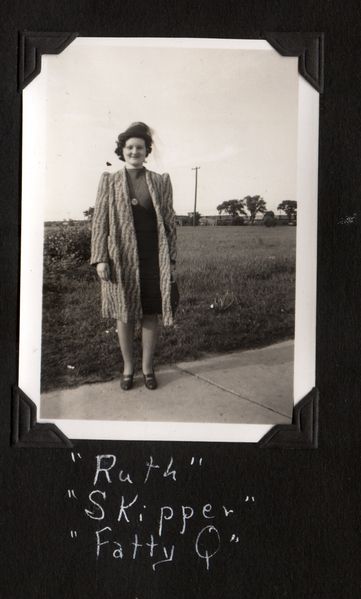 Here, to the right, is Ruth. She once had a photo album of her life in the late 1930s, which I’ve started scanning recently. On the second page of the album, she has a series of captioned photos captioned as a dramatis personae, identifying the players in her life. Her self-portrait includes several nicknames — “Fatty Q” being one of them. While not the lithest of ingenues, Ruth isn’t obese, so that might be why she’s accepted the nickname without offense. The nickname of ‘Skipper’ is interesting, too. The two things we associate ‘skipper’ with — the fat guy on Gilligan’s Island, and Barbie’s sister — were decades away from Ruth’s life. Captaining a boat was the main definition, although ‘one who skips’ could mean she either has a slight jump in her step, or maybe she prefers to avoid going to class. Either way, Ruth has two 1930s nicknames that she was proud enough to own to save it for her kids to see: I hope she was still as proud of them years later.
Here, to the right, is Ruth. She once had a photo album of her life in the late 1930s, which I’ve started scanning recently. On the second page of the album, she has a series of captioned photos captioned as a dramatis personae, identifying the players in her life. Her self-portrait includes several nicknames — “Fatty Q” being one of them. While not the lithest of ingenues, Ruth isn’t obese, so that might be why she’s accepted the nickname without offense. The nickname of ‘Skipper’ is interesting, too. The two things we associate ‘skipper’ with — the fat guy on Gilligan’s Island, and Barbie’s sister — were decades away from Ruth’s life. Captaining a boat was the main definition, although ‘one who skips’ could mean she either has a slight jump in her step, or maybe she prefers to avoid going to class. Either way, Ruth has two 1930s nicknames that she was proud enough to own to save it for her kids to see: I hope she was still as proud of them years later.
Tag: 1930s
Sittin’ on Grandpa
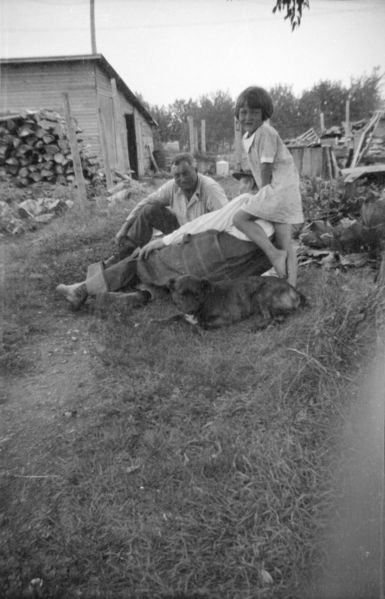 On a hot summer day, sittin’ on grandpa is the funnest thing for a pixie-cut girl to do. This photo hails from the late 1930s in rural Minnesota, and is the kind of candid real-life photo you hope to see out of dozens of posed, dour pictures of family members. It’s also a part of the farm photos don’t usually get taken at –nobody poses in front of the junk pile for a family picture. The jungle-gym is clearly Grandpa: he looks much the same in nearly every photo, up until the 50s. The guy sitting up, I’m unsure who he might be, possibly a hired hand. As a farm kid, I remember those summer days — “I’m bored; I should go bother Grandpa for a while.” Turns out, Grandpas usually spend all day hoping the grandkids stop by to interrupt his work.
On a hot summer day, sittin’ on grandpa is the funnest thing for a pixie-cut girl to do. This photo hails from the late 1930s in rural Minnesota, and is the kind of candid real-life photo you hope to see out of dozens of posed, dour pictures of family members. It’s also a part of the farm photos don’t usually get taken at –nobody poses in front of the junk pile for a family picture. The jungle-gym is clearly Grandpa: he looks much the same in nearly every photo, up until the 50s. The guy sitting up, I’m unsure who he might be, possibly a hired hand. As a farm kid, I remember those summer days — “I’m bored; I should go bother Grandpa for a while.” Turns out, Grandpas usually spend all day hoping the grandkids stop by to interrupt his work.
Laziness and the P.W.A.
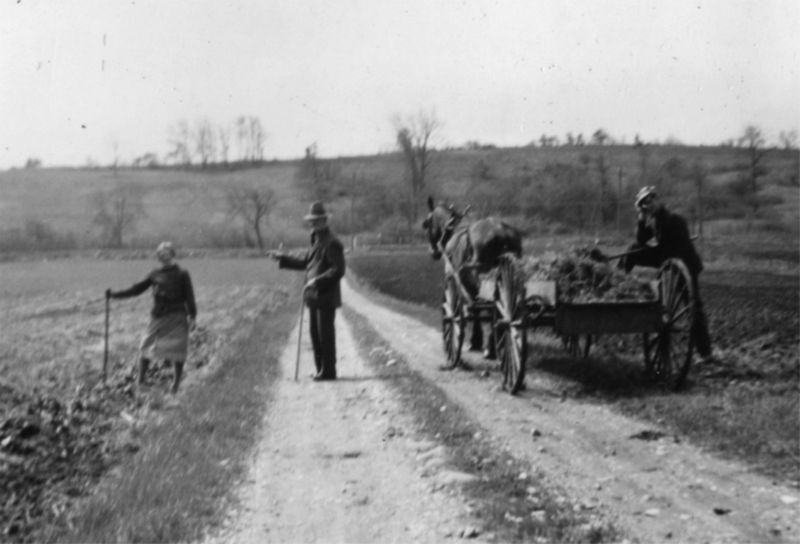
In 1933, the US government starting putting a large amount of money into public works, helping the economy, building communities, and keeping people working. The PWA, or Public Works Administration, did a lot of high-profile work, but the PWA helped communities and projects of all sizes. This picture was captioned “P.W.A. Workers” — however, they look hardly like a PWA project. The owner of the photo album had a sense of humor; the PWA (and its relative, the WPA) had a somewhat undeserved reputation for laziness. Ms. Photographer, it seems, saw a woman in the field — and the guys not working — as representative of the PWA, whether or not their paychecks came from the New Deal or not.
see also: the pwa *pwa thoughts * *pwa and nat’l parks * the wpa * wpa murals * wpa in georgia * wpa posters
1930s Nicknames
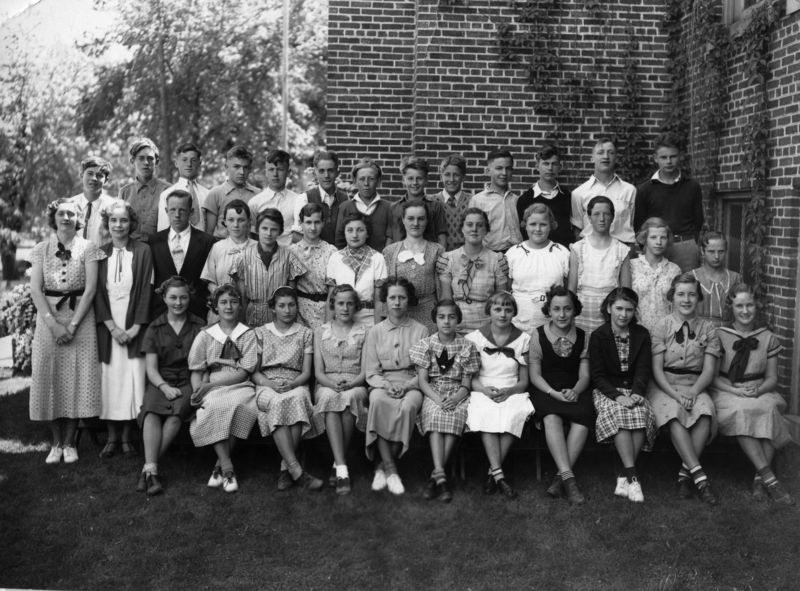
High school — a time of nicknames and rivalries no matter when you were born. This photo, from a photo-album of the late 1930s, has some evidence on the front. That girl in the front row in white — right in the middle — has her eyes blacked-out with pencil (you can see it in the large version). On the back were, presumably, well-wishes from student’s friends, names written in the hand of the signer. Underneath the photo, written on the page in the photo album, are a clearer picture of the students identities: “Bruno”, “Giggling Gertie”, “Ossie” — and I think that’s just the girls.
Riding the Red Comet
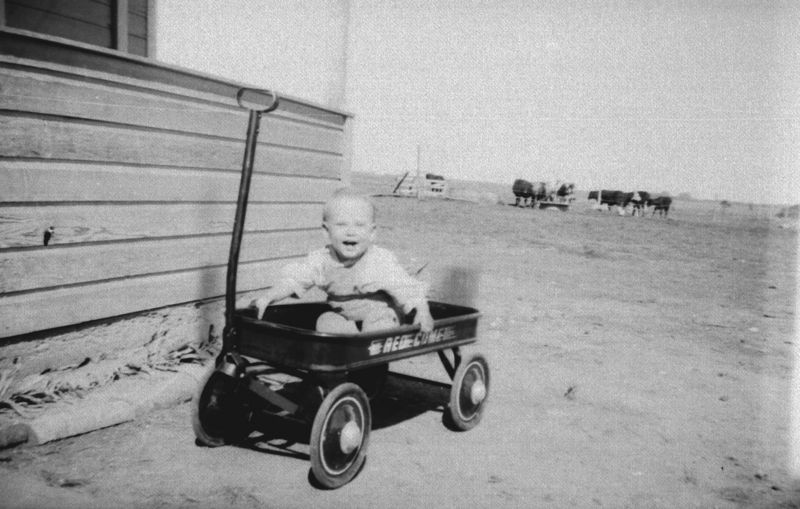 From an overexposed image, adjusted with Photoshop. This Red Comet, a fine steel wagon with rubber wheels, was probably a big gift for a kid back ‘in the day’ – no Toys R Us, and not a lot of money, meant not a lot of toys to go around. A wagon gave a kid transportation: load up the dog, fill it with rocks, drag around a sibling, all kinds of things beyond the scope of two little arms. Also, for a mom whose arms are already burdened with all kinds of carrying, a kid can be pulled along behind when working in the yard. Big rubber wheels and high clearance allowed for off-road travel.
From an overexposed image, adjusted with Photoshop. This Red Comet, a fine steel wagon with rubber wheels, was probably a big gift for a kid back ‘in the day’ – no Toys R Us, and not a lot of money, meant not a lot of toys to go around. A wagon gave a kid transportation: load up the dog, fill it with rocks, drag around a sibling, all kinds of things beyond the scope of two little arms. Also, for a mom whose arms are already burdened with all kinds of carrying, a kid can be pulled along behind when working in the yard. Big rubber wheels and high clearance allowed for off-road travel.
See also: radio flyer * how wagons are made * thoughts on red wagon origins